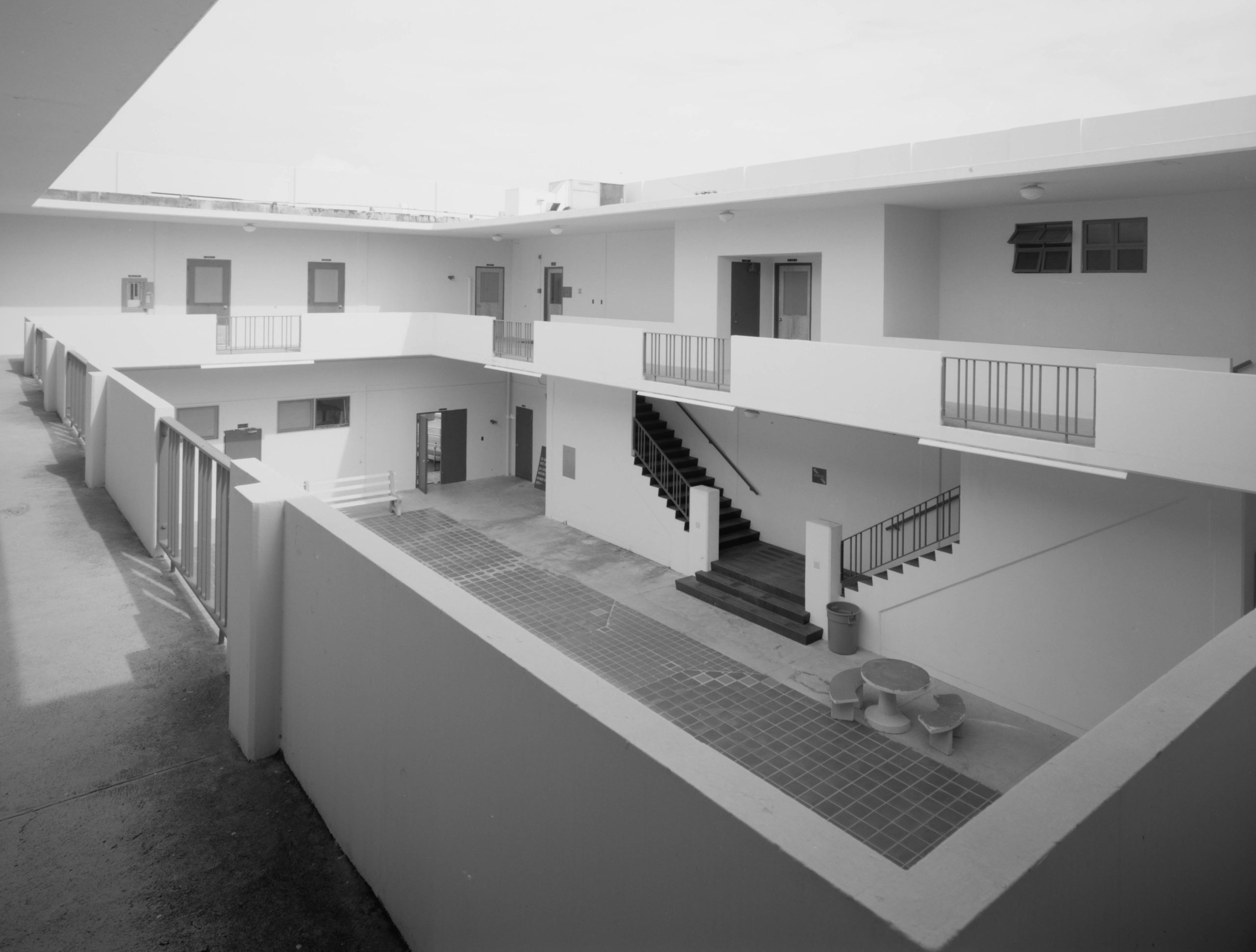The Ford Island Dispensary
July 31, 2014Posted on July 31, 2014
By Ray Panko | [email protected] | Pearl Harbor Aviation Museum
Ford Island, NAS Pearl Harbor
This is the third in a series of posts about buildings on Ford Island, NAS Pearl Harbor. Early in the attack, the Ford Island dispensary was damaged by a high-level Japanese bomb that exploded in its central courtyard. However, it continued to operate, treating the wounded until they could be evacuated to hospitals.

Source: National Archives and Records Administration, College Park, Maryland. Photo 80-G-32599. Dated December 7, 1941.
During the months before the Japanese attack on Pearl Harbor, the U.S. Navy engaged in a vast building program in Hawaii. This included the Fleet Air Base Dispensary on Ford Island designated Building 76. It was created to perform lighter medical care. The dispensary was new but fully operational by the day of the attack. Its design was unusual; it was built around an open-air courtyard with a concrete floor. This gave it a feeling of openness, although its overall design said “generic government building.”

Source: Historic American Building Survey HABS HI-381.
Japanese Attack on Pearl Harbor
Near the start of the attack, the Japanese dropped armor-piercing bombs on the battleships. Forty-nine Japanese “Kate” bombers flew along the backbone of battleship row in chevrons of five planes. The Kates in each dropped their bombs simultaneously on a single target battleship. To increase the probability of a hit, the Japanese normally flew in three chevrons of three aircraft each. However, they did not have enough planes at Pearl Harbor to do this.
Figure 3: High-Level Attack on the Battleships

Source for background photograph: National Archives and Records Administration, College Park, Maryland. Photo 80-G-30551. Captured Japanese photograph.
The massive ship-killer bombs weighed 1,754 pounds (796 kg). However, to gain enough speed to penetrate battleship deck armor, they had to be dropped from an altitude of 10,000 feet. This gave poor accuracy, and most bombs missed their targets. In addition, Figure 3 shows that the bomb was primarily a penetrating piece of steel. Designed to break through 5.8 inches (150 mm of deck armor), the bomb’s nose was 19-inches (48.7 cm) thick. It also had a thick casing that left little room for explosive charge. The charge was only 49.1 pounds (22.3 kg)—a mere 2.8% of the bomb’s total weight. Unless the bomb hit a battleship, penetrated its deck, and detonated near a magazine, it would not do massive damage. Of the 49 Type 99 Number 80 bombs the Japanese dropped on battleships, only one succeeded in sinking a battleship.
Figure 4: Type 99 Number 80 Bomb

Source: United States Technical Mission to Japan, Japanese Bombs, Intelligence Facile O-1, Target O-23.
Several bombs dropped off course, including one aimed at the USS California. Unfortunately, the dispensary sat sitting almost directly alongside the California, near the edge of the island. The errant bomb landed right inside the building, in the central courtyard.
Figure 5: The Dispensary and the California

Source: National Archives and Records Administration, College Park, Maryland. Photo 80-G-32499. Dated December 8, 1941.
Fortunately, the bomb buried itself deeply before exploding. Consequently, most of its modest explosion was directed upward. Nevertheless, as Figure 1 shows, the bomb crater was impressive. The bomb caused minor structural damage to the building and knocked out all utilities. However, the dispensary was still able to function. It treated and stabilized the attack victims until they could be evacuated to hospitals for comprehensive treatment. If the bomb had done more damage, the consequences for the wounded would have been severe. The building was repaired in 1942. It is currently being renovated.
Sources
General information about the attack and the bomb: Zimm, Alan D., Attack on Pearl Harbor: Strategy, Combat, Myths, Deceptions, Philadelphia: Casemate, 2011.
Photographs and information about the Dispensary: Historical American Buildings Survey, U.S. Naval Base, Pearl Harbor, Fleet Air Base Dispensary, Hornet Avenue between Essex & Enterprise Streets, Pearl City, Honolulu County, HI, Report HABS HI-381, undated but probably around 1990.http://www.loc.gov/pictures/collection/hh/item/hi0626/
Information about the Type 99 Model 80 bomb: United States Technical Mission to Japan, Japanese Bombs, Intelligence Facile O-1, Target O-23, December 1945, p. 35






